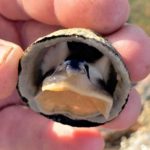Fish, crabs, and shrimp provide the livelihood of small-scale and artisanal fishermen on the east coast of Sri Lanka. Due to specific local conditions, various fishing and gathering techniques have evolved, including the use of shrimp pit traps.
Tidal situation at Pottuvil lagoon
Pottuvil is located on Sri Lanka’s southeastern coastline. North of the town is Pottuvil lagoon, which is fed by freshwater from inland and saltwater from a long and narrow channel connecting the lagoon to the Indian Ocean. All incoming waves towards the lagoon will be broken first by the surrounding rocks and another rock in the middle of the channel, and thereafter by dense stands of mangroves.
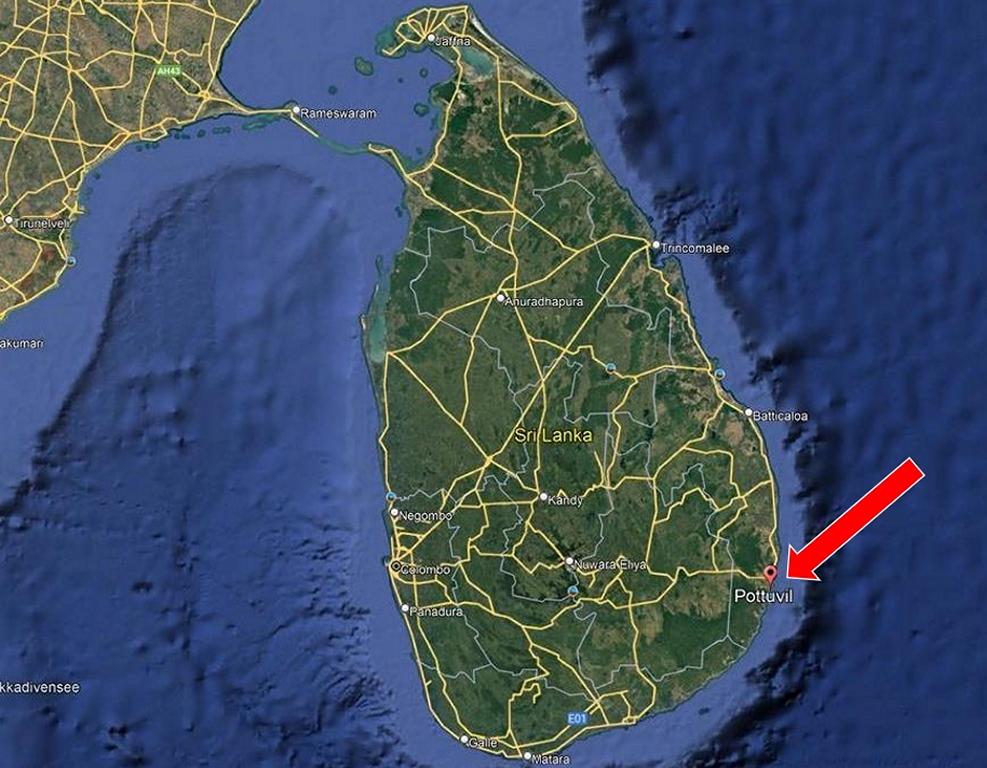

Although the ocean front is rough and a well-known surfing spot, the brackish water within the lagoon is still, and there are no dangerous waves. The tide is rising and falling on average with a moderate 0,6 meters.
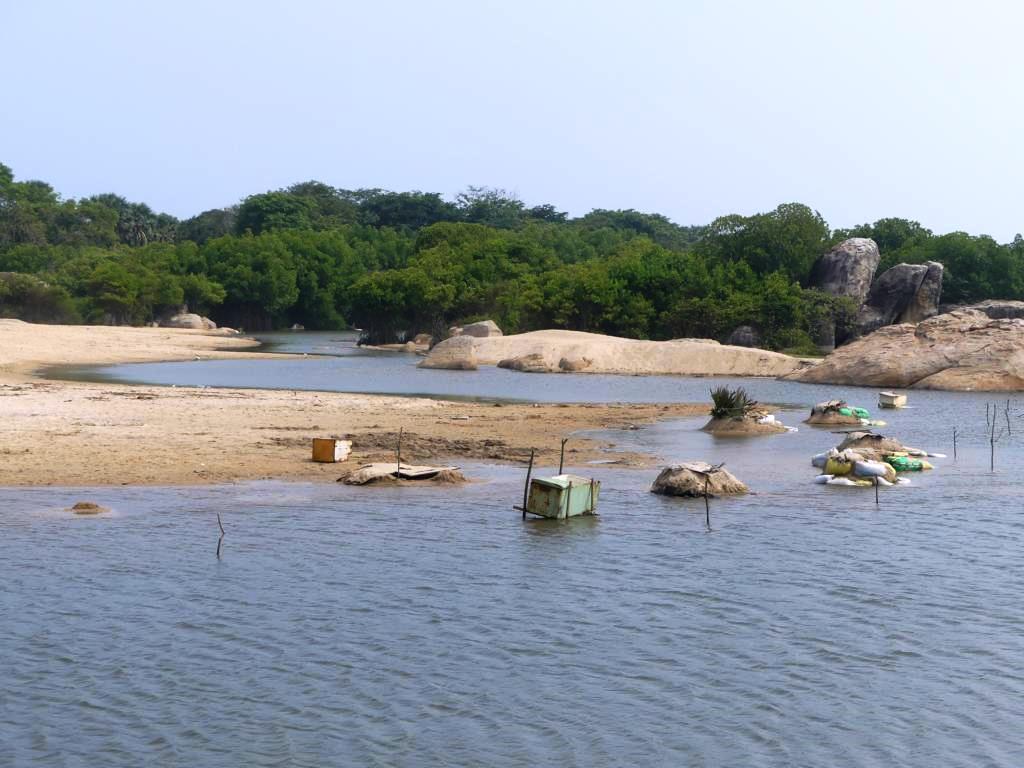
Shrimp catching techniques
In Sri Lanka, shrimp trapping techniques vary by region and tradition. Still, several standard methods are used by fishers along the country’s east coast, estuaries, and lagoons.

These trapping techniques commonly include stake nets, hoop nets, cast nets, seine nets, gill nets, basket traps, and tidal enclosures. At Kottukal Beach, at the northern end of the Pottuvil lagoon, two techniques are specifically used to catch shrimp: hoop nets and pit traps. Other types of nets, like cast nets, target fish and catch wild shrimp as bycatch.
Shrimp species caught
These traditional pit traps catch various species of small shrimp. These are typically juvenile or non-commercial penaeid shrimps and other small crustaceans. We could recognize Kadal shrimps (Metapenaeus dobsoni) and White shrimps (Metapenaeus monoceros) in the fishermen’s catch, which were 4 – 5 cm / 1.6 – 2’’ long. While these juvenile shrimps may not be as commercially valuable as larger penaeid shrimps of the same species, they play a crucial role in the livelihoods of the local population, who rely on them as ingredients in regional dishes.
Shrimp pit traps on steep coastlines
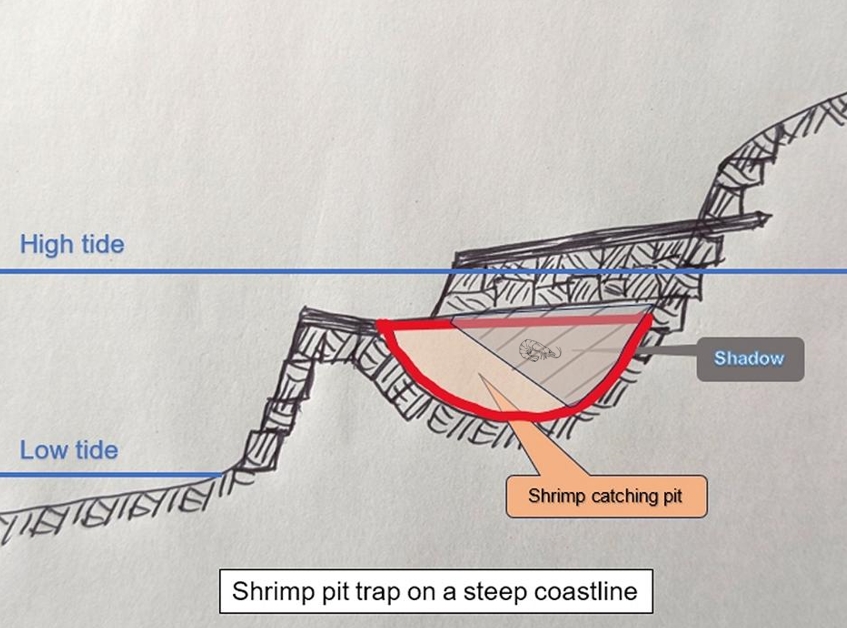
On steep coastlines, fishermen first dig a terrace into the steep slope and then a basin of about 60 cm / 2 ft in diameter into this terrace. At least the sidewalls will be reinforced with turf from the surrounding areas. The entrance area must be stabilized against the eroding water with wooden planks, sandbags, or pieces of grass turf.
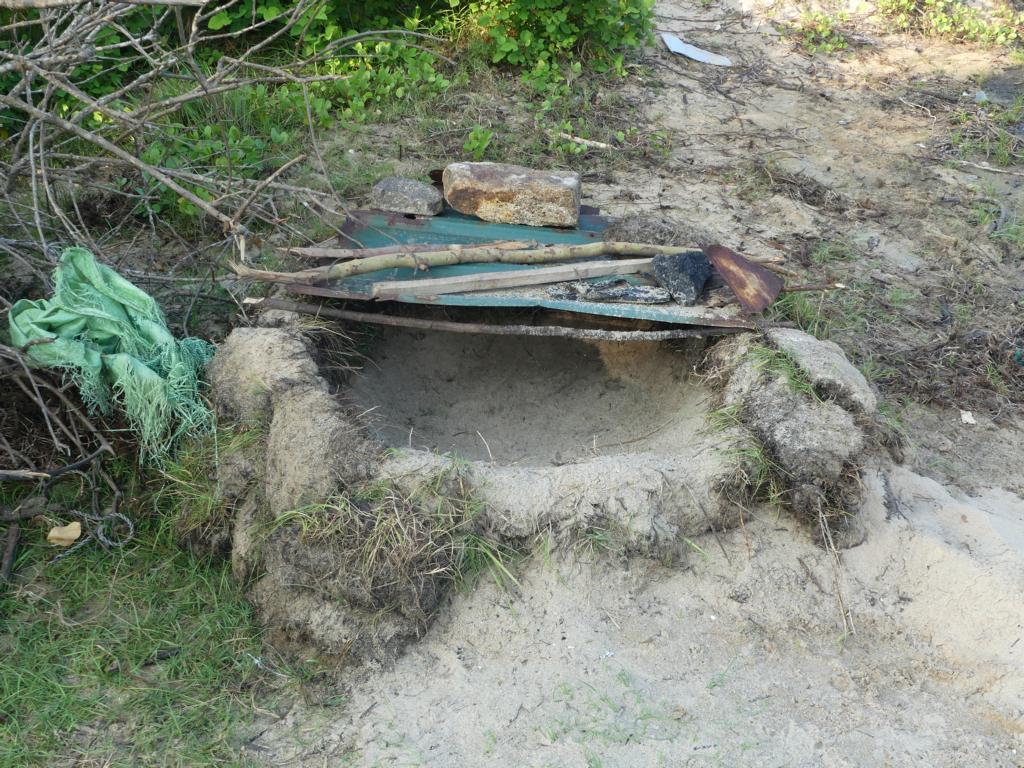
The shadow, generated by various kinds of roofing materials, will entice shrimp to enter this contraption.

The pit trap is designed so that the average high tide water level will be between the entrance lip and the roofing material.
Shrimp pit traps along mangrove forests
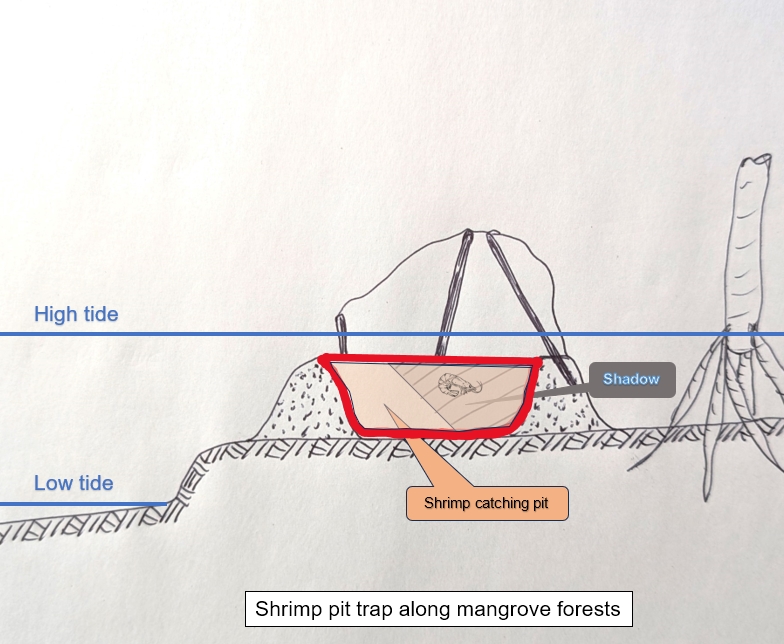
A ring of sand will be built up on small, cleared mudflats adjacent to mangrove stands, forming a basin that serves as the catching pit. The diameter of this pit is slightly larger than that of the pits in steep slopes. We observed pit diameters of approximately 70 cm (2.3 ft).
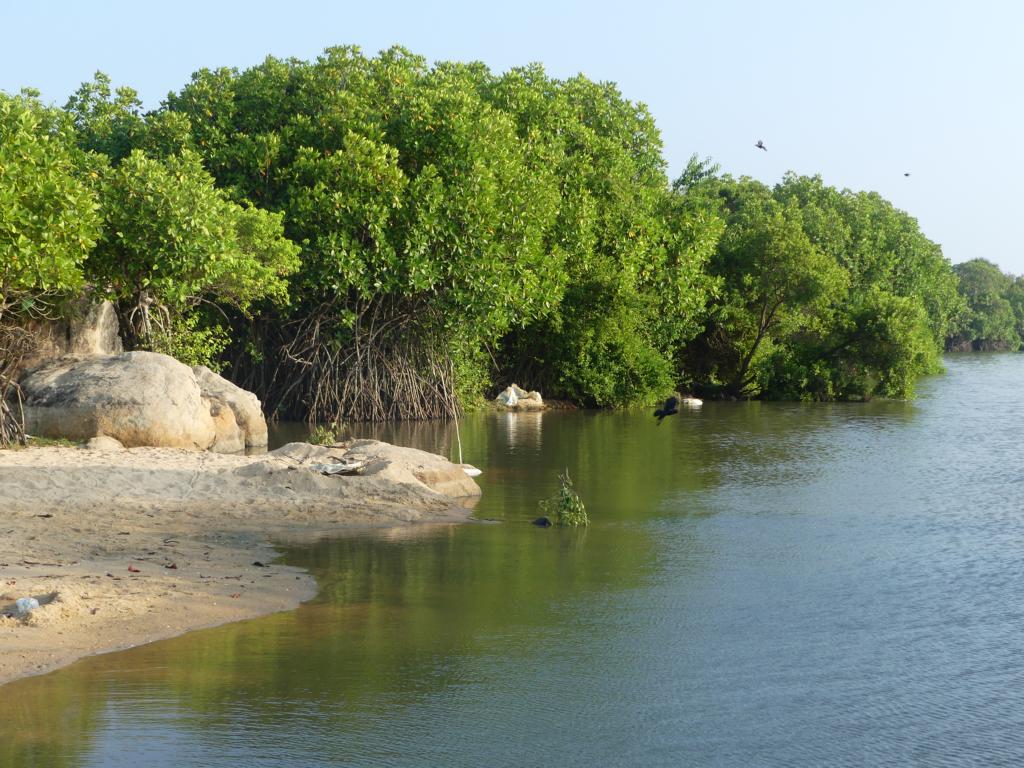
Sheets of PE-woven old fertilizer bags, held by supporting sticks, provided shade.

Shrimp pit traps on flat, sandy beaches

This type of shrimp pit trap is the most elaborate to build but also the most productive. The sandy bottom is unstable, like on slopes or muddy mangrove flats, and constantly shifts. Therefore, these traps need adjustments and renovations before every catching cycle.
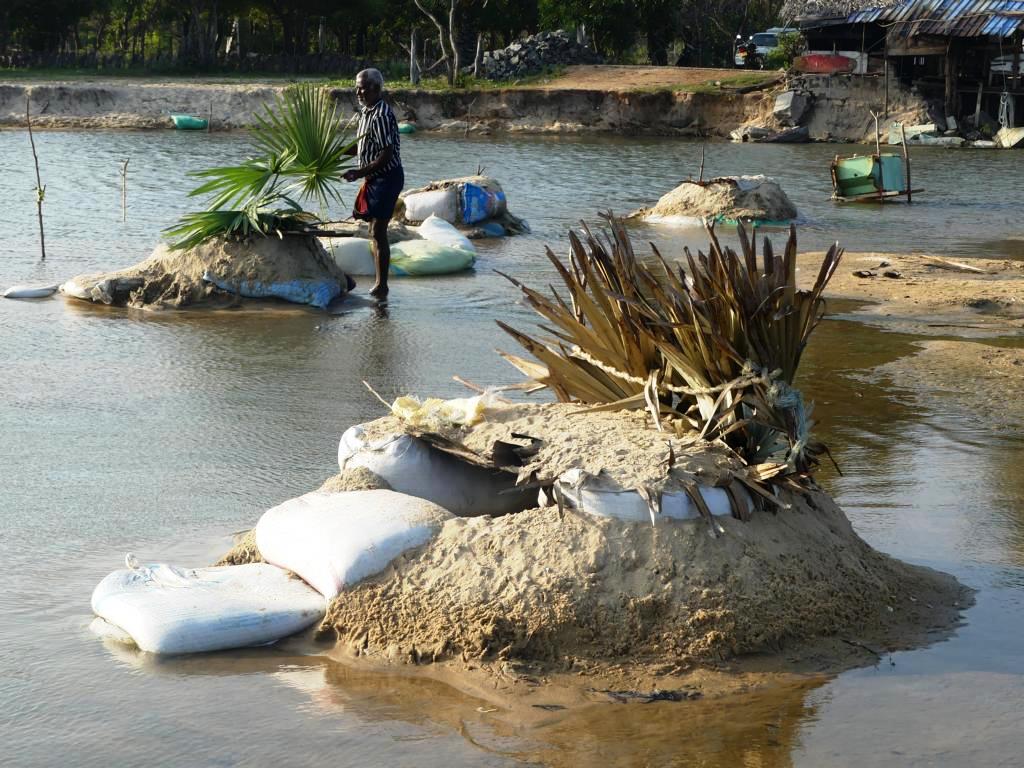
Sandbags, which are used to build the base and sidewalls, are the most stable walls under these conditions. They will be filled with beach sand on all sides. As these walls are quite steep, the entrance to the pit has to be reinforced and extended with sandbags.
The roofing for shade is made of flat wooden planks or tin sheets. Enticement for shrimp to enter the pit is not only shade, but also fan palm fronds, representing a natural environment.
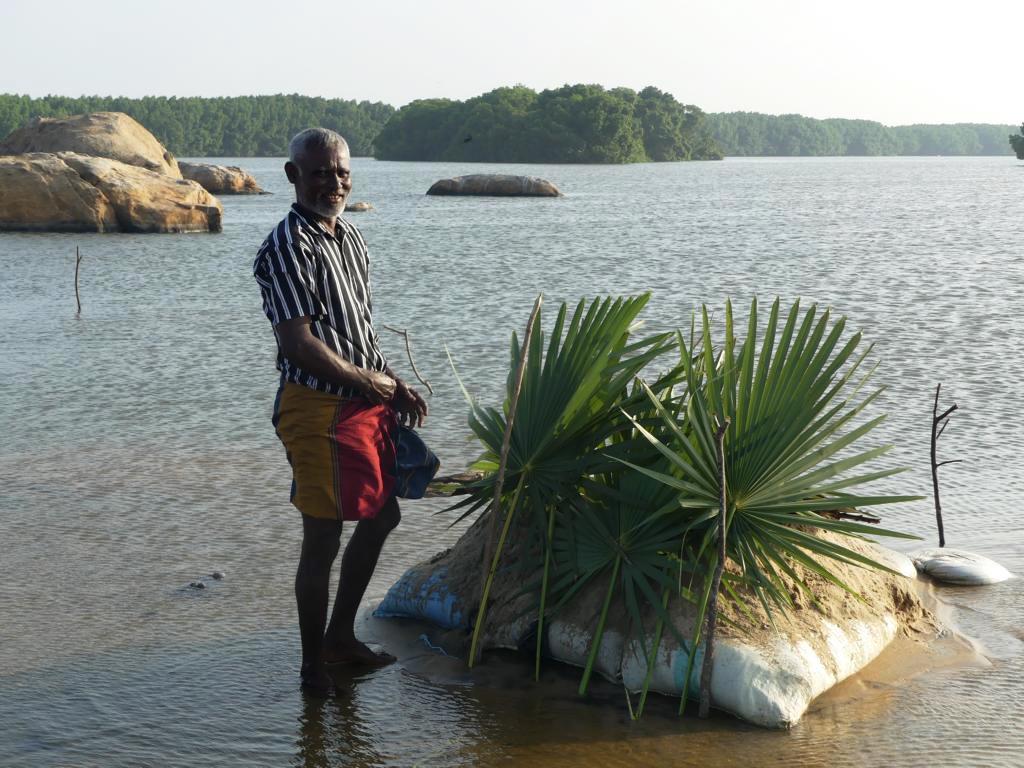
The catching principle of shrimp pit traps
During low tide, the pit trap is made ready for catching. During high tide, water and shrimp will flow into the pit, as shrimp typically move with the water current when foraging. Additionally, the partial pit cover creates a darker area within the pit, where the shrimp feels more secure.

As the tide recedes, water drains out of the pit, but shrimp remain in the shadow of the pit. They get suddenly trapped because the horizontal lip of the pit entrance shuts off the flow back into the lagoon. As the tide continues to drop, the water level in the pit also lowers, as the remaining water seeps out through the sand walls. And the caught shrimp are held back in the pit.
Average catch size
Catch sizes vary depending on several factors, including location. The fisherman pictured in this article operated the shrimp pit traps on the lagoon side of the flat, sandy beach. On Feb. 17th, 2025, he set three pit traps around 5 p.m. and harvested them the following morning. Every trap held between 1.5 and 2 kg of shrimp.
Lessons learned about shrimp pit traps:
- A particular tidal situation was the basis of developing a technique of catching shrimp by pit traps by local small-scale fishermen.
- An artificial pool is created, which allows shrimp to enter, but cuts them off from returning to the lagoon.
- These pits provide shade and perceived shelter for the shrimp as an enticement to enter.
- Three different pit designs adapt to steep slope coastlines, mangrove flats, and flat, sandy beaches.
.




